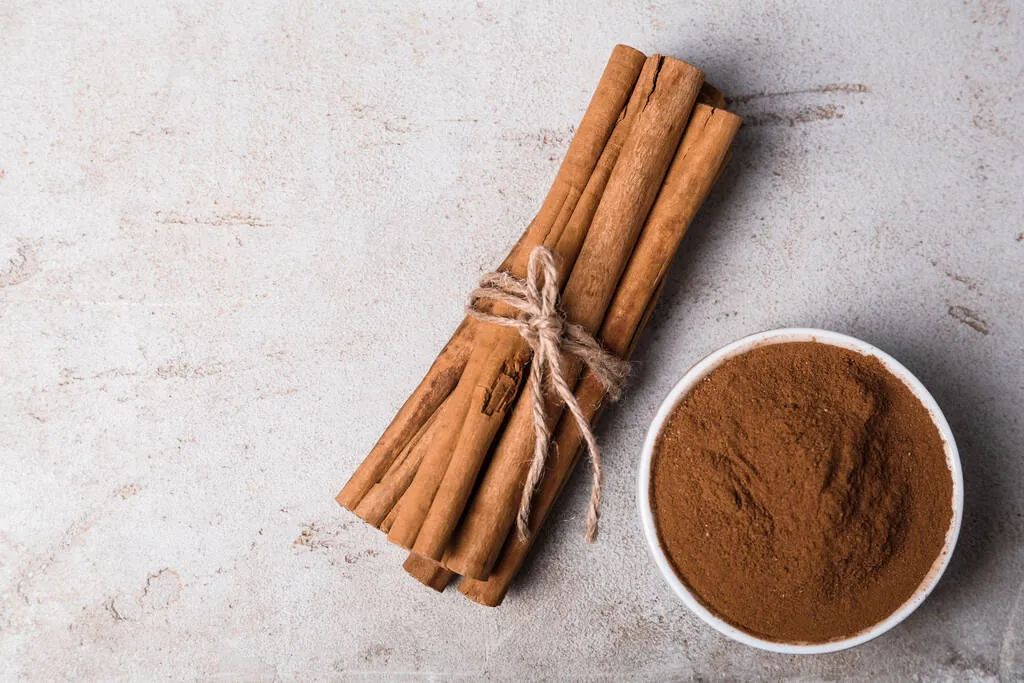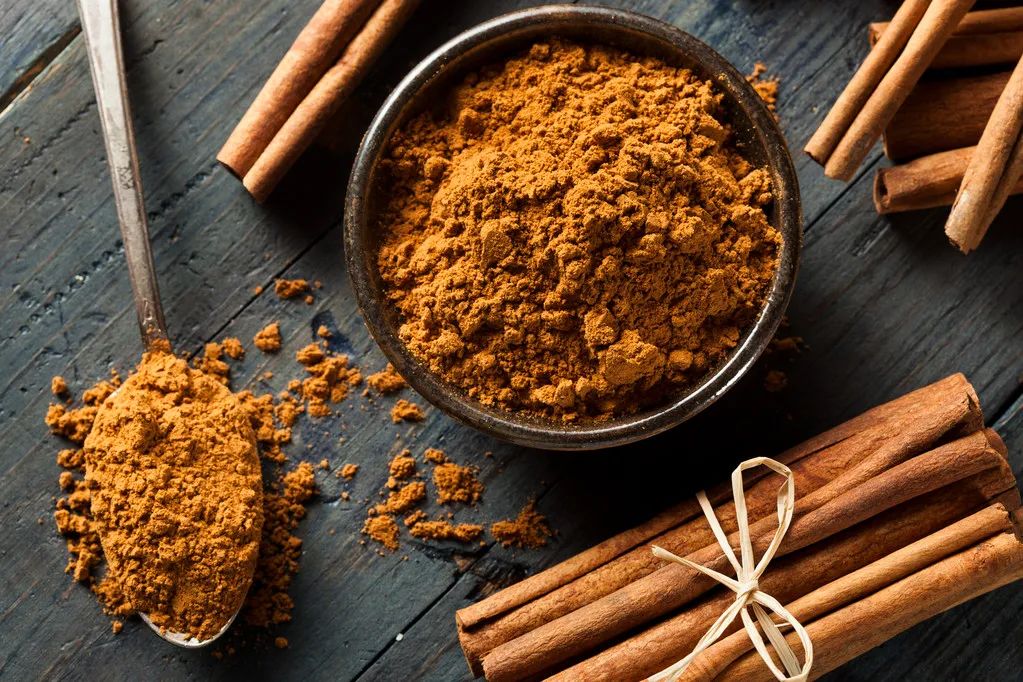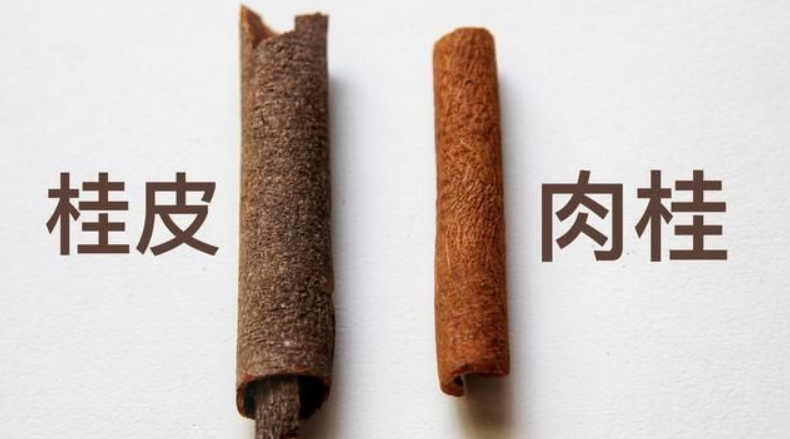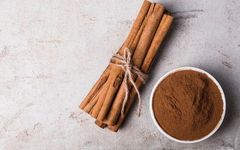 When it comes to cinnamon (肉桂, ròuguì), most people might associate it with the aroma of braised meat. As a spice, cinnamon has a long history, having been used in ancient Egypt to make perfumes. In fact, enhancing fragrance is just one of cinnamon’s uses; multiple studies have found that cinnamon can also enhance learning ability and memory.
When it comes to cinnamon (肉桂, ròuguì), most people might associate it with the aroma of braised meat. As a spice, cinnamon has a long history, having been used in ancient Egypt to make perfumes. In fact, enhancing fragrance is just one of cinnamon’s uses; multiple studies have found that cinnamon can also enhance learning ability and memory. According to Life Times (生命时报), experts reveal the health benefits of cinnamon based on research findings and recommend three beverage pairings.
According to Life Times (生命时报), experts reveal the health benefits of cinnamon based on research findings and recommend three beverage pairings.
Interviewed Experts
Dr. Cai Jun, Chief Physician of Clinical Nutrition at Longhua Hospital, Shanghai University of Traditional Chinese MedicineDr. Ning Weixia, Associate Chief Physician at Chengdu Second People’s HospitalVice President of the Nutrition and Food Safety Branch of the Chinese Geriatrics Society, Zhou Chunling
Cinnamon Helps Improve Memory and Learning Ability
Recently, a review study published in Nutritional Neuroscience found evidence that cinnamon enhances learning and memory.  A team from Birjand University of Medical Sciences in Iran screened 40 studies from a database of 2605 studies for analysis, of which 33 were conducted in vivo, 5 in vitro (such as analyzing cells or post-mortem tissues), and 2 were clinical studies.
A team from Birjand University of Medical Sciences in Iran screened 40 studies from a database of 2605 studies for analysis, of which 33 were conducted in vivo, 5 in vitro (such as analyzing cells or post-mortem tissues), and 2 were clinical studies.
- In vivo studies indicated that using cinnamon or its components, such as cinnamaldehyde (肉桂醛, ròuguì quán), cinnamic acid (肉桂酸, ròuguì suān), can positively affect cognitive function;
- In vitro studies showed that adding cinnamon or cinnamaldehyde to cell culture media can increase cell viability;
- Two clinical studies were conducted, one involving adolescents who consumed cinnamon gum, and another involving prediabetic adults under 60 who consumed white bread with 2 grams of cinnamon added.
The study on adolescents found that chewing cinnamon gum could significantly improve memory function and reduce anxiety; in contrast, the clinical study on prediabetic adults found no significant changes in cognitive function after consuming cinnamon.
Researchers believe that cinnamon and certain bioactive compounds it contains may have a positive impact on human brain function, primarily reflected in enhancing memory and learning ability.
 Another study published in 2017 by Rush University Medical Center in the United States also indicated that consuming cinnamon can enhance learning ability. Typically, individuals with learning difficulties have lower levels of proteins responsible for memory in the hippocampus (the area of the brain responsible for memory) and higher levels of proteins responsible for neurotransmission. The sodium benzoate produced during the digestion of cinnamon enters the brain and increases the concentration of proteins responsible for learning, thereby helping to improve memory and learning ability.
Another study published in 2017 by Rush University Medical Center in the United States also indicated that consuming cinnamon can enhance learning ability. Typically, individuals with learning difficulties have lower levels of proteins responsible for memory in the hippocampus (the area of the brain responsible for memory) and higher levels of proteins responsible for neurotransmission. The sodium benzoate produced during the digestion of cinnamon enters the brain and increases the concentration of proteins responsible for learning, thereby helping to improve memory and learning ability.
Are Cinnamon and Cassia the Same Substance?
Due to the similar names and common use as spices, many people confuse cassia (桂皮, guìpí) and cinnamon. In fact, they have the following differences:
1
Plant Source
Cinnamon: The dried bark of the Lauraceae plant, specifically the cinnamon tree. In China, there are three main varieties of cinnamon: White Atractylodes Cinnamon (白茅肉桂, bái máo ròuguì), Red Atractylodes Cinnamon (红茅肉桂, hóng máo ròuguì), and Shapi Cinnamon (沙皮桂, shā pí guì). The White Atractylodes Cinnamon is of the highest quality and has a high oil content. Cassia: There are over ten varieties of Lauraceae trees in China, with common types including Chinese Cinnamon (天竺桂, tiān zhú guì), Yinxiang (阴香, yīn xiāng), Fine-leaved Cinnamon (细叶香桂, xì yè xiāng guì), Sichuan Cinnamon (川桂, chuān guì), Blunt-leaved Cinnamon (钝叶桂, dùn yè guì), and South China Cinnamon (华南桂, huá nán guì), all of which produce bark referred to as cassia.
2
Appearance
Cinnamon: Hollow, thin-walled, and generally reddish-brown in color, appearing more refined. Common cinnamon sticks are uniform in length, typically 8-15 cm. Cassia: Usually sold with the outer bark intact, some may have the thin outer layer removed, appearing thicker and more robust, with varying lengths and thicknesses, some rolled and others in chunks, typically dark brown or gray-black in color.
3
Aroma and Flavor
Cinnamon: Has a rich aroma, smells more mellow, and has a sweet and spicy taste. Cassia: The thicker the cassia, the stronger the aroma, which is sharper and less mellow than cinnamon, with a spicy taste.
4
Medicinal Value
Cinnamon: Used in traditional Chinese medicine, it has the effects of warming the meridians, dispelling cold and alleviating pain, and tonifying fire and assisting yang, applicable for conditions like dysmenorrhea, cold uterus, impotence, and amenorrhea. Cassia: Has astringent and anti-diarrheal properties, reduces swelling, dispels wind and cold, and warms the middle to alleviate pain, mainly used for loss of appetite, amenorrhea, and cold-type stomach and abdominal pain, with less medicinal use, primarily used as a spice.
Unlocking the Overlooked Health Benefits of Cinnamon
Broadly speaking, cinnamon refers to the bark of various plants in the Lauraceae family; narrowly, in botanical terms, cinnamon refers to the native cinnamon of China, which has a strong flavor and a unique bitterness. Cinnamon has extensive uses in daily diet and traditional Chinese medicine, with completely different usage methods between Eastern and Western chefs. In the West, cinnamon usually appears in powdered form in desserts or coffee drinks; in China, cinnamon is typically used in pieces of bark as a seasoning for braised meat to enhance flavor. The flavors of these two types of cinnamon also differ; the cinnamon used in desserts and drinks is often Ceylon Cinnamon (锡兰肉桂, xī lán ròuguì), which has thinner bark than Chinese cinnamon, presenting a bright yellow-brown color, with a lighter aroma, almost no bitterness, and a hint of sweetness. Regardless of the type, cinnamon is rich in polyphenols that have anti-inflammatory and antioxidant properties, offering various health benefits.
Regardless of the type, cinnamon is rich in polyphenols that have anti-inflammatory and antioxidant properties, offering various health benefits.
✓
Helps Improve Blood Lipids
Cinnamon, besides being used as a spice, is also a commonly used traditional Chinese medicine that tonifies fire and assists yang, dispels cold and alleviates pain, and warms the meridians. A joint study by Chengdu Second People’s Hospital and Chengdu University of Traditional Chinese Medicine in 2022 indicated that cinnamon can regulate blood lipid levels in patients with metabolic syndrome and related diseases, lowering total cholesterol, triglycerides, and low-density lipoprotein cholesterol. The study found that high doses of cinnamon often exhibited better blood lipid regulation, with daily use exceeding 1.5 grams potentially increasing high-density lipoprotein cholesterol (also known as good cholesterol) levels.
It is important to note that cinnamon has a spicy and warming nature, and is not suitable for everyone. For metabolic syndrome and related diseases, it is essential to select herbs based on syndrome differentiation and use them rationally. Pregnant women, those with yin deficiency and excess heat, heavy menstrual bleeding, pelvic inflammation, sore throat, and individuals with other heat-related illnesses should avoid consumption.
✓
Regulates “Body Cold”
Traditional Chinese medicine believes that cinnamon has a spicy and sweet flavor, with a warming nature, and belongs to the kidney, heart, spleen, and liver meridians. It has the effects of warming the kidneys and assisting yang, guiding fire back to the source, dispelling cold and alleviating pain, and warming the meridians. It can improve issues such as cold pain in the stomach and abdomen due to spleen and stomach deficiency, and cold pain in the abdomen for women. For example, many people seek coolness in summer; adding some cinnamon to food can help counteract the cold with the body’s yang energy at its peak during summer.
✓
Helps Control Weight
A research team from the University of Michigan found that cinnamaldehyde can induce fat cells to burn, reducing energy storage and preventing fat accumulation. Researchers stated that consuming cinnamon bread during holidays can indeed help prevent significant weight gain. In addition to cooking with cinnamon, consider alternative methods, such as pairing cinnamon powder with three types of beverages for enhanced effects:
- Coffee: Pairing coffee with cinnamon enriches the flavor and doubles the invigorating effect.
- Black Tea: From a TCM perspective, cinnamon’s warming nature pairs well with black tea, helping to warm the spleen and stomach.
- Wine: Before the development of bottling technology and corks in the 16th century, the common practice to remove the sour and muddy taste of wine was to add cinnamon powder.
It is important to note that the intake of cinnamon is not better the more you consume; it is best not to exceed 4 grams per day. ▲This issue’s editor: Zhang YuLet me see, who hasn’t clicked“Looking”👇 Copyright Notice: This article is original to Life Times (WeChat ID: LT0385) and may not be reproduced without authorization. Sharing in WeChat Moments is welcome.We do not spread rumors or gossipWe do not use clickbait titlesWe do not exist solely for sharesPlease believe in the power of originalityOn the road to health, we are willing to walk seriously with you
Copyright Notice: This article is original to Life Times (WeChat ID: LT0385) and may not be reproduced without authorization. Sharing in WeChat Moments is welcome.We do not spread rumors or gossipWe do not use clickbait titlesWe do not exist solely for sharesPlease believe in the power of originalityOn the road to health, we are willing to walk seriously with you
Supervised by People’s Daily, organized by Global Times
WeChat ID: LT0385 For inquiries, please callReprint inquiries: 010-65363791Business cooperation: 010-65363765
For inquiries, please callReprint inquiries: 010-65363791Business cooperation: 010-65363765
If you like it, please click“Looking”

